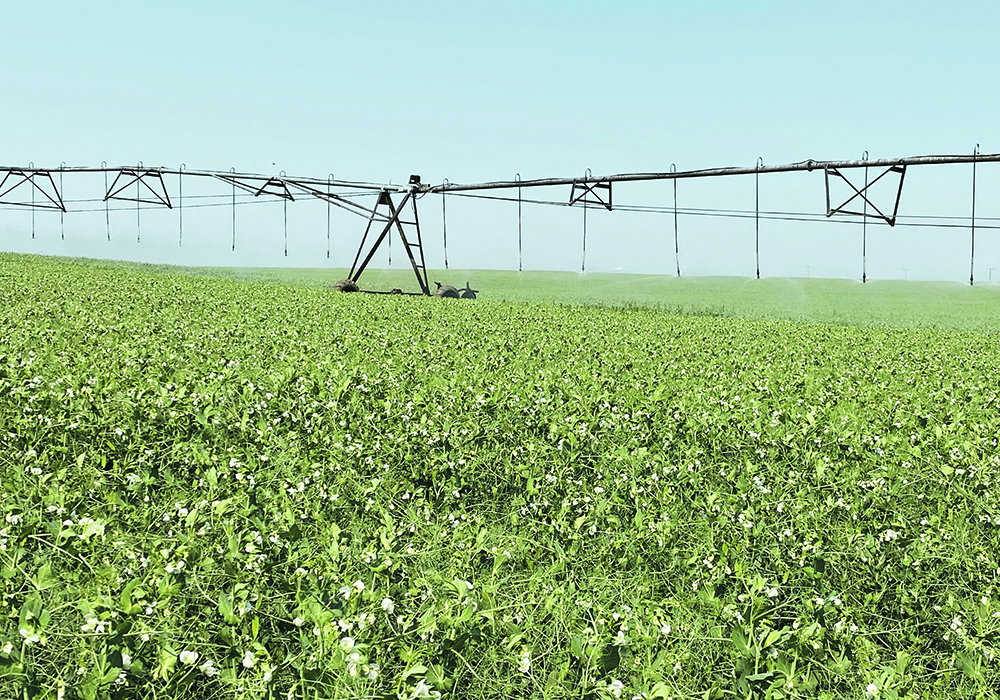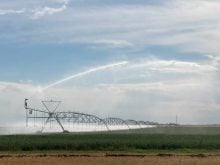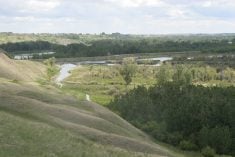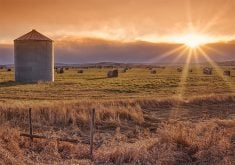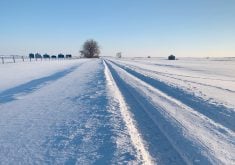Irrigators in southern Alberta remain confident that water supplies will be adequate for the upcoming growing season
The transition of La Nina to El Nino appears underway, with the expectations of more moisture for the Prairies this season.
Mountain snowpacks across the Rockies are variable, with the United States seeing excessive buildups and most northern parts of the mountains at or below average.
The latest Water Supply Outlook for Alberta report is forecasting the Bow River basin to be running much below to below average for runoff this year while the Milk and Oldman river basins are expected to be in the below average to average range.
Read Also

Trump’s tariffs take their toll on U.S. producers
U.S. farmers say Trump’s tariffs have been devastating for growers in that country.
Those current basin forecasts come with a caveat because spring snowfalls can drastically change the outlook.
It’s a tale of two halves of the Rockies, said meteorologist Matt Makens, with the U.S. Southwest being inundated with large snowpacks with the northern Rockies experiencing less than normal amounts.
“It’s far more hit and miss when we start to look at far northern U.S. and southern Canada as far as where the surpluses are,” said Makens. “The good news is we still have favourable flow to bring in additional snow to the Canadian Rockies. We still have another month and a half to determine what the ultimate snowpack will be in the mountains but we’re still hovering around average.”
David Westwood, St. Mary’s River Irrigation District general manager, said his organization is watching for the temperature trends this spring. Cooler nights have slowed runoff so far this year.
“We went into the winter well, our reservoirs were at 90 percent full, so we’re pretty happy with that,” said Westwood, adding SMIRD is confident about the water supply outlook this year.
Westwood said the shifting weather pattern to El Nino isn’t expected to significantly impact the district’s outlook.
“Early indications are that our water supply should be very consistent to what it has been the last few summers. We feel pretty confident about that,” said Westwood.
Makens said there is still a lot of atmospheric turbulence as weather patterns shift towards an El Nino following three years of La Nina.
“Going through March into early April, it’s a difficult time because the atmosphere and the ocean are rapidly changing right now,” he said, adding the Pacific Ocean temperatures around the equator have been cooler for the past three years. “But here, over the last several weeks to couple of months, we’ve seen a rapid warming taking place. That officially ended La Nina.”
But that transition of warmer ocean temperatures has yet to dislodge the atmospheric conditions, which continue to be in a La Nina pattern.
“As we go through the next few months — April, May and into June — we’re going to see the oceans continue a warming trend and that will head us to an El Nino. It might not get us there the next few months, but it’s headed in that direction,” said Makens.
The speed of that transition could see severe precipitation if it comes fast.
“The Prairies have drought problems and have for a couple of years. So, that soil isn’t quite ready to handle a lot of water. If you flip the switch too quickly, the soils aren’t ready to handle a lot of that water this summer in the wet season,” said Makens.
The early spring is expected to be cooler than average across the Prairies, which should spread out mountain runoff, though possibly also cause a late planting season, although Makens expects that to change later in the season.
“Once we hit May, I think we’re going to see a rapid warm up,” he said. “I think there is going to be a period of time from May to early June when we may not get much moisture. It could be fairly stagnant. And then, like last year, June and July were pretty good months overall, it may be like that again.”
Makens said patience is going to be key for the planting season this year.


